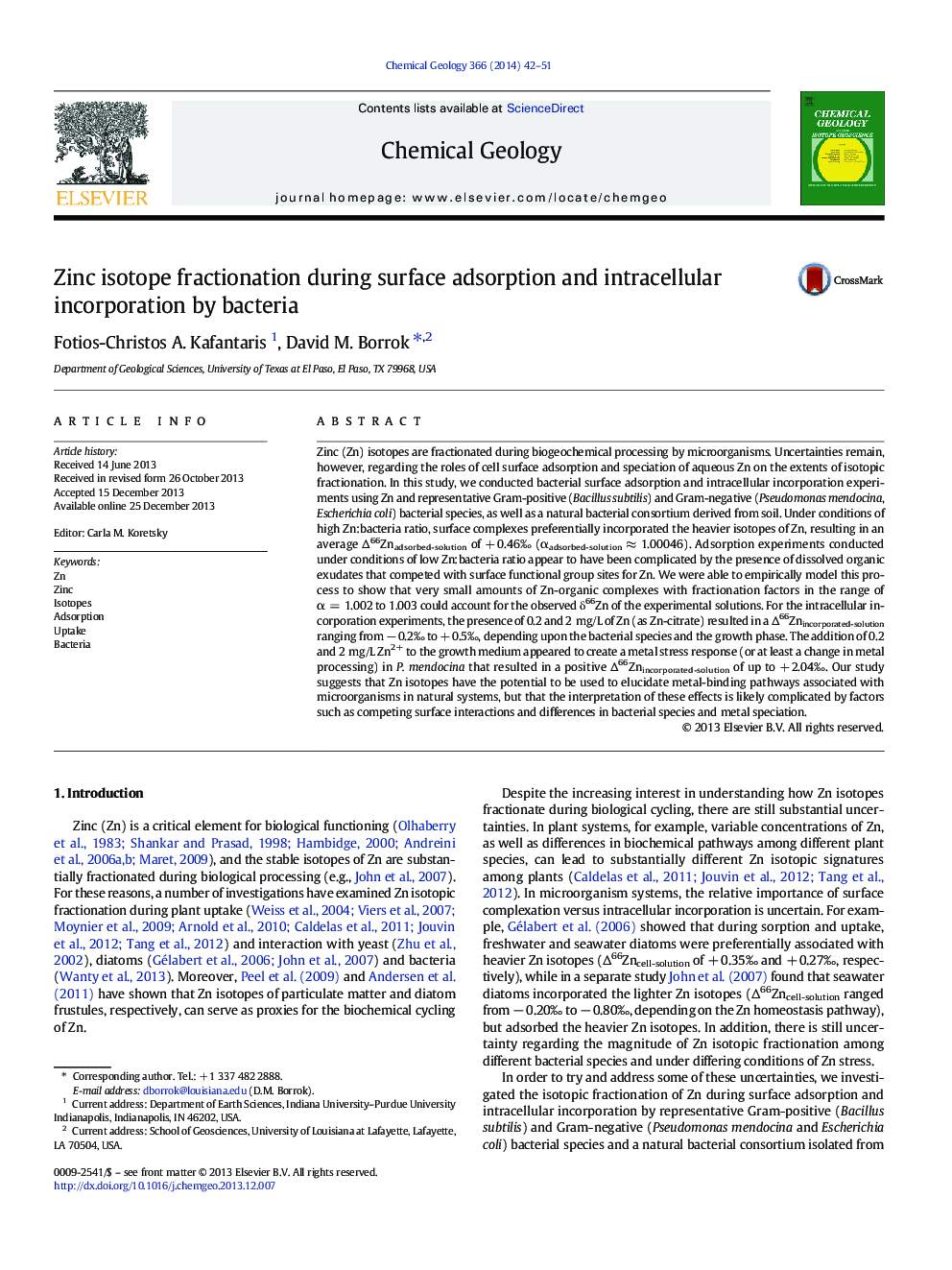| کد مقاله | کد نشریه | سال انتشار | مقاله انگلیسی | نسخه تمام متن |
|---|---|---|---|---|
| 4698846 | 1637604 | 2014 | 10 صفحه PDF | دانلود رایگان |
• The Δ66Znadsorbed-solution for bacterial surfaces is + 0.46‰.
• Dissolved Zn organic complexes can strongly impact solution δ66Zn.
• The δ66Zn for intracellular Zn depends on Zn speciation and concentration.
Zinc (Zn) isotopes are fractionated during biogeochemical processing by microorganisms. Uncertainties remain, however, regarding the roles of cell surface adsorption and speciation of aqueous Zn on the extents of isotopic fractionation. In this study, we conducted bacterial surface adsorption and intracellular incorporation experiments using Zn and representative Gram-positive (Bacillus subtilis) and Gram-negative (Pseudomonas mendocina, Escherichia coli) bacterial species, as well as a natural bacterial consortium derived from soil. Under conditions of high Zn:bacteria ratio, surface complexes preferentially incorporated the heavier isotopes of Zn, resulting in an average Δ66Znadsorbed-solution of + 0.46‰ (αadsorbed-solution ≈ 1.00046). Adsorption experiments conducted under conditions of low Zn:bacteria ratio appear to have been complicated by the presence of dissolved organic exudates that competed with surface functional group sites for Zn. We were able to empirically model this process to show that very small amounts of Zn-organic complexes with fractionation factors in the range of α = 1.002 to 1.003 could account for the observed δ66Zn of the experimental solutions. For the intracellular incorporation experiments, the presence of 0.2 and 2 mg/L of Zn (as Zn-citrate) resulted in a Δ66Znincorporated-solution ranging from − 0.2‰ to + 0.5‰, depending upon the bacterial species and the growth phase. The addition of 0.2 and 2 mg/L Zn2 + to the growth medium appeared to create a metal stress response (or at least a change in metal processing) in P. mendocina that resulted in a positive Δ66Znincorporated-solution of up to + 2.04‰. Our study suggests that Zn isotopes have the potential to be used to elucidate metal-binding pathways associated with microorganisms in natural systems, but that the interpretation of these effects is likely complicated by factors such as competing surface interactions and differences in bacterial species and metal speciation.
Journal: Chemical Geology - Volume 366, 14 February 2014, Pages 42–51
